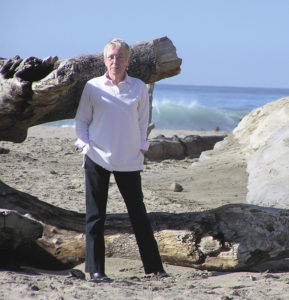About
<iframe src="https://tanyahayeslee.substack.com/embed" width="480" height="320" style="border:1px solid #EEE; background:white;" frameborder="0" scrolling="no"></iframe>Artist’s Statement
I am a landscape painter: I am a painter and I am a landscape, bound bone and blood and heartbeat to earth, sea, and sky.
When I was a child, we lived in the suburbs of Boston, Massachusetts, in a town where there still existed woods, lakes, ponds, swamps, hills — to a child it seemed a limitless natural playground in which we could always count on getting lost and tramping for miles to find our way home. I still walk like that — mile upon mile through the city, on the beach and marshes, in the woods. The details of my landscapes have changed, but not my yearning to be in and of the landscape, moving silently, always watching.
As an artist, it is the physicality of paint that most interests me. What is it, pigment and binder, as a particular form of matter and how does this matter react/respond to canvas and panel, turpentine and oil, brushes and palette knives, rags and fingers, temperature and humidity, light and dark?
The physicality of paint begins, literally, in the landscape. As it was millennia ago, many paints are comprised from pigments derived from earth, stone, metals, and minerals — basic elements of the landscape itself.
Red and yellow ochre, sienna and umber are ancient earth pigments used as far back as 350,000 years ago in funeral rites. Red, yellow and black iron and manganese oxide pigments and charcoal were used to create the Paleolithic rock art of Lascaux, Altamira, Tanzania and dozens of other sites. Ultramarine blue was originally made from pulverized lapis lazuli; it was used in Afghanistan 2500 years ago and for centuries was a rare and expensive pigment. It is still used to signify the Virgin Mary’s cloak.
The cadmiums — brilliant reds, yellows and oranges made from cadmium metal — were discovered in the nineteenth century and exploited by the Impressionists. And of course, gold — the rare yellow, red and white metal that has for thousands of years been beaten into gossamer sheets and used to signify that which we consider most holy.
The atoms, and ultimately sub-atomic particles/waves of energy, that comprise these pigments are derived from the stuff of planet Earth itself and the substances originating in other suns — such as iron and the other heavy metals — that have accrued here.
These are the same particles or waves or energies that we are made of and to which we will inevitably return, each bit of us pulled into millions of different cycles of matter and energy, becoming for a moment here and there land, sea, and sky, traversing our expanding universe and beyond.
Painting is my path to understanding how we in this human incarnation are anchored (or most likely unanchored) in time and space. Where do we stand? And why?
These are a child’s questions, those that in our teens and twenties we thought we would actually figure out. In my seventies now, I no longer have the conviction that those answers can be found in reason, imagination, emotion, or faith.
I do not have a conviction or a knowable path. But I do have a process. I am a landscape painter.
Bio
Tanya Hayes Lee studied studio art at the Mass College of Art, Scottsdale Artist School, and Northern Arizona University. She lives and works in Cambridge, Massachusetts.
Lee’s greatest inspirations include the nineteenth-century painters George Innes, J.M.W. Turner, and John Constable, twentieth-century icons Helen Frankenthaler, Louise Nevelson and Alice Neel, and many contemporary artists.
Awards
Newburyport Art Association Art Adventure Grant, 2023
Cambridge Arts Council Community-Supported Arts Grant, 2017
Represented by
13 Forest Gallery, 167A Mass. Ave., Arlington, MA 02474.
Alpers Fine Art, 8 Dock Square, Rockport, MA 01966.
